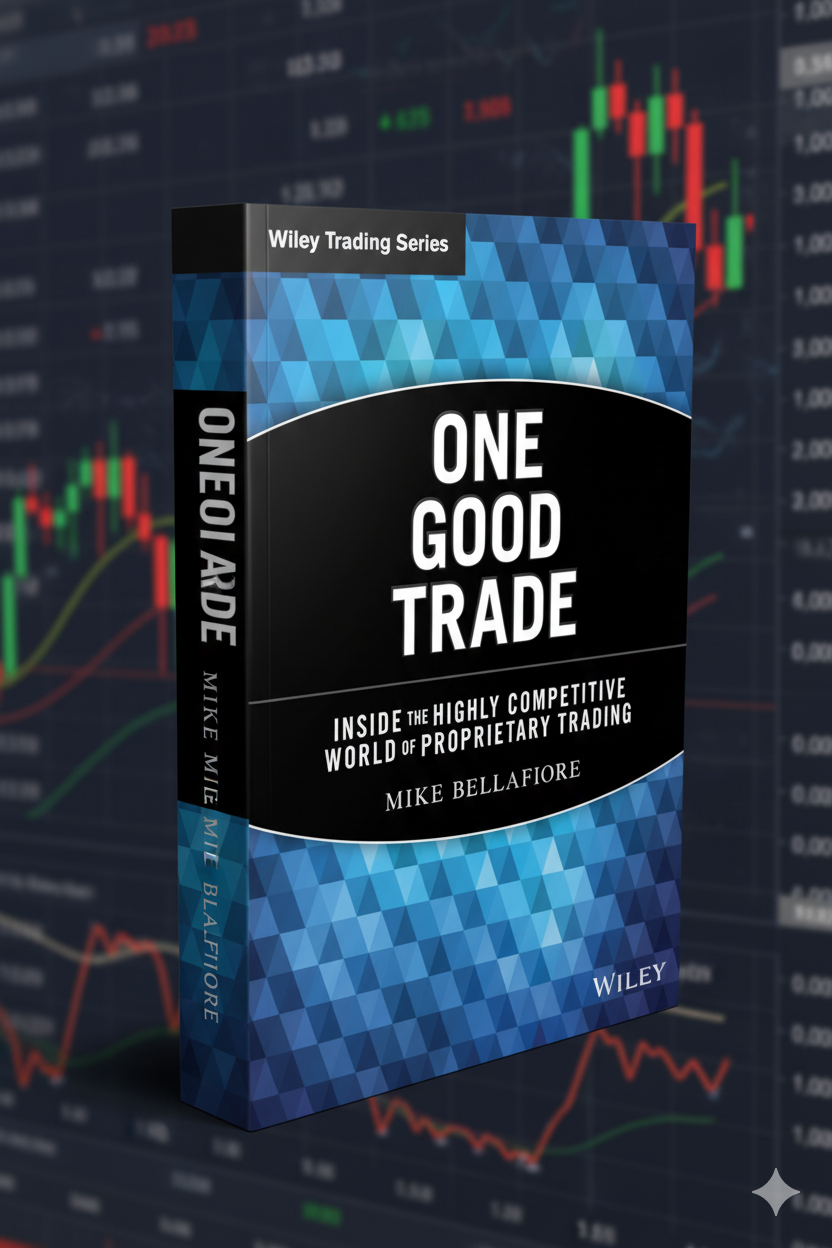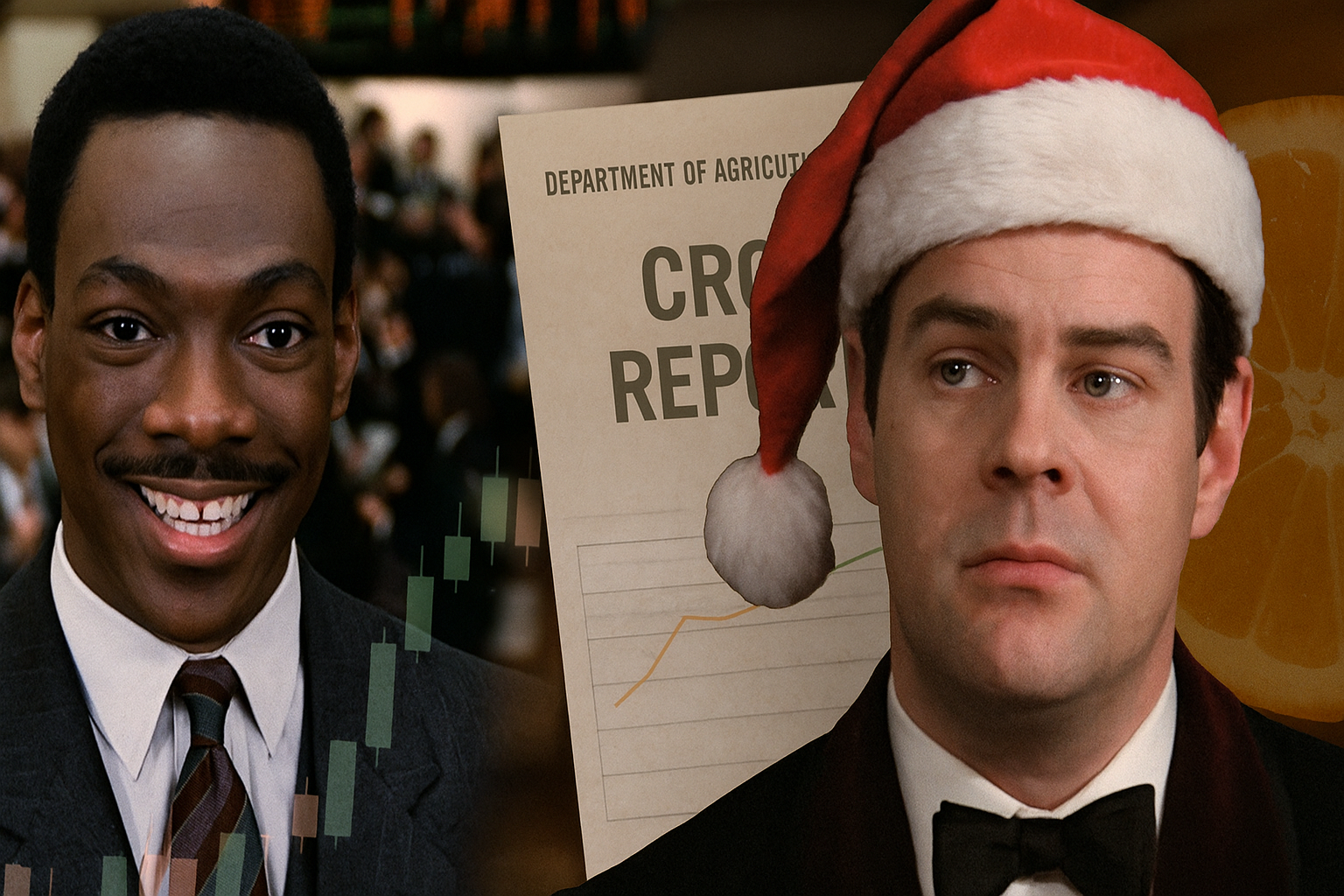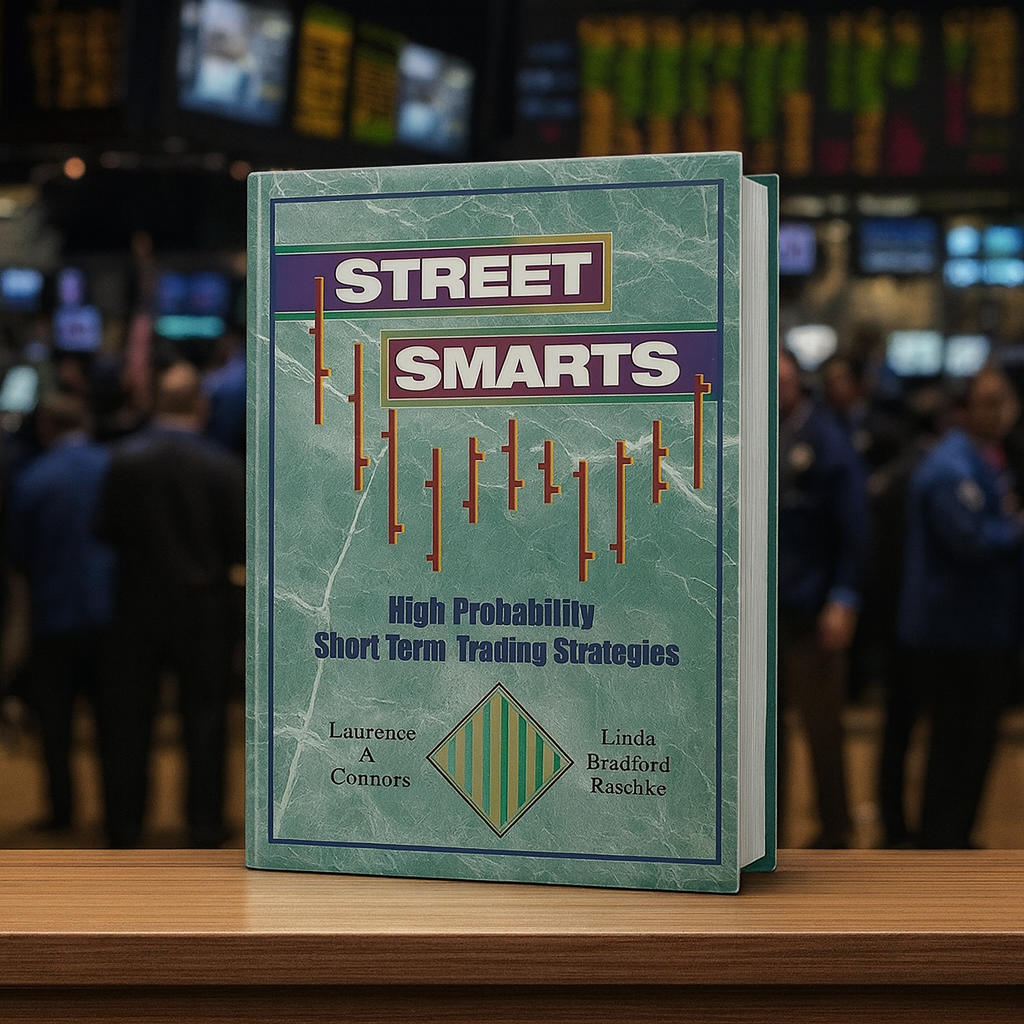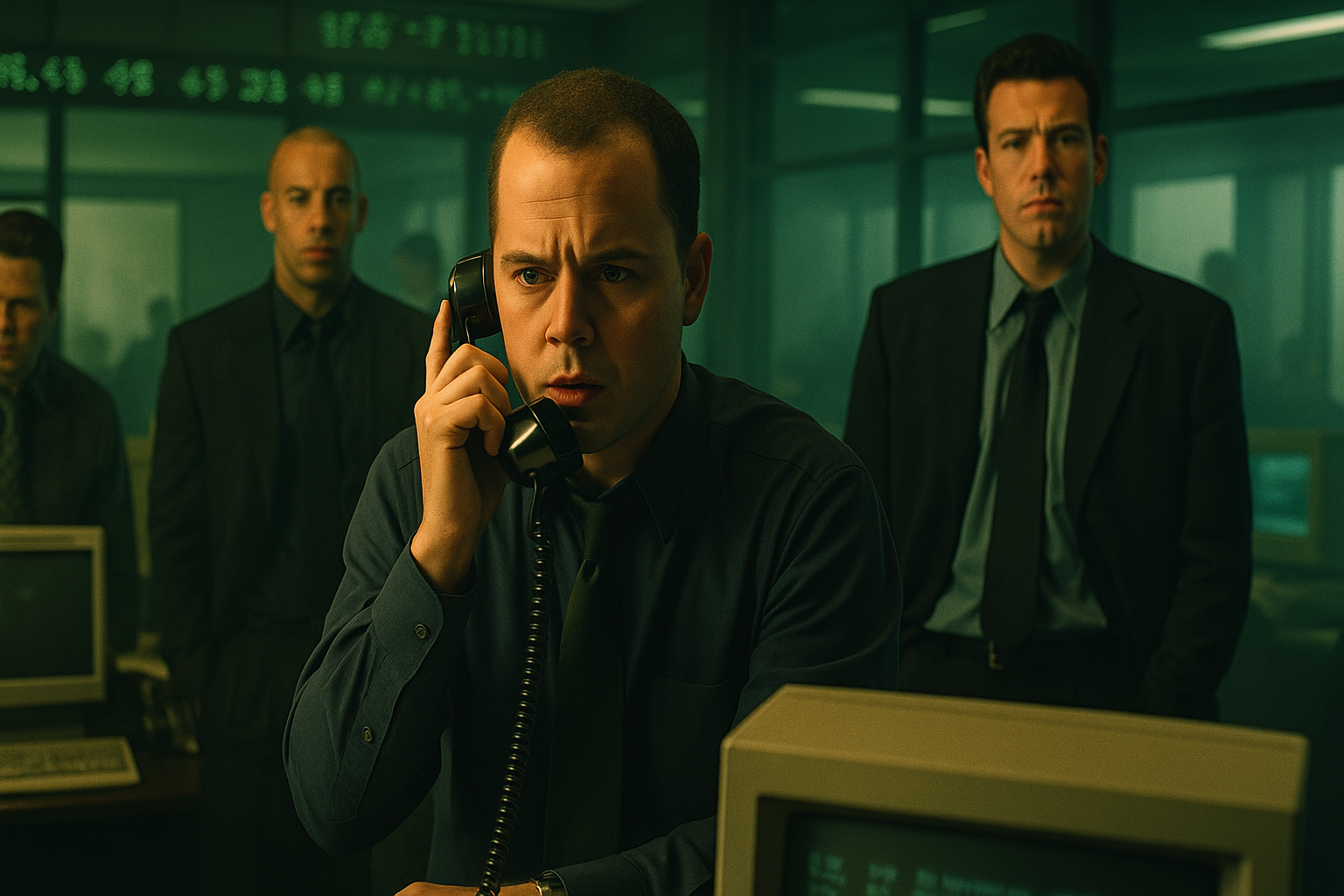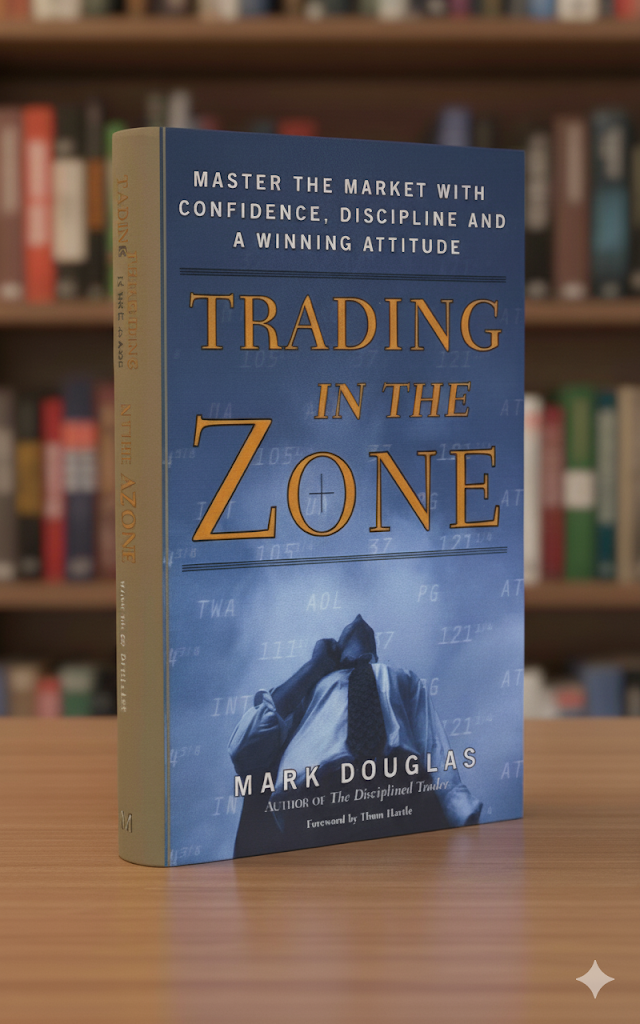One Good Trade makes clear that real trading is a craft, not a shortcut: one well-planned trade at a time, rigorous daily reviews, and full accountability. Gain a practical framework to improve decisions and avoid hype-driven mistakes—learn why the process wins.
What does a real trader do all day?
For many of us, the word “trader” conjures images from movies: a chaotic floor, screaming, and billion-dollar bets made on gut instinct. Or perhaps we think of the modern version: someone staring at a cryptic screen of flashing lights, getting rich from home on “meme stocks.”
Mike Bellafiore’s One Good Trade quietly tears down these myths. This book is a look under the hood of a real, modern-day Wall Street trading firm. Bellafiore is the co-founder of SMB Capital, a “proprietary trading” firm in New York City. In simple terms, this means his company doesn’t manage other people’s money. It trains its own traders to make smart, short-term trades with the firm’s own cash.
The book’s central theme is simple but profound: Trading is not a get-rich-quick scheme, a form of gambling, or a magic trick. It is a craft, like being a surgeon or a professional athlete. It requires intense preparation, constant practice, and brutal self-review.
In an era defined by market hype and overnight crypto millionaires, One Good Trade is a vital dose of reality. It matters today because it shifts the focus from the outcome (the money) to the process (the skill). And this, it turns out, is the most valuable lesson any investor—beginner or pro—can ever learn.
Core Ideas
Bellafiore builds his case around a few central concepts, all explained in plain language.
First is the idea of “One Good Trade.”
This doesn’t mean one trade that makes you rich. It means one single, well-planned, well-executed, and well-managed trade. The goal is not to be a hero. The goal is to make “one good trade,” and then another, and then another. The profit is the by-product of a correct process, not the goal itself.
Second, he argues that professional trading is a performance sport.
He treats his traders like pro athletes. They have a playbook (their best trade setups). They review “game tape” (their trading journals) every single night. They have a coach (him and other senior traders) who scrutinizes their performance. They don’t just “show up and trade.” They prepare for the market “game” every morning, and they review their performance every evening.
Third is the power of the “Daily Review.”
Bellafiore hammers this point home. The most important part of a trader’s day is not the opening bell; it’s the 30 minutes after the market closes. This is when the trader must record their trades in a journal and ask hard questions: What did I do well? What did I do wrong? Was this trade part of my plan, or was I just bored? This commitment to self-review is what separates the professionals from the amateurs who just “try again tomorrow.”
Finally, the book shows that every trader is a small business. At his firm, traders don’t earn a salary. They are given capital and a desk, and they keep a percentage of the profits they generate. This “eat what you kill” model forces ultimate accountability. You are the CEO, head of risk, and intern for your own trading business. You are responsible for your own rules, your own discipline, and your own results.
Strengths
The book’s greatest strength is its honesty. Bellafiore is not selling a secret, million-dollar “system.” He is selling hard work, discipline, and patience. He is refreshingly open about the fact that most aspiring traders fail.
He shares stories of traders on his desk who blew up their accounts, lost their confidence, and had to be let go. He also shares stories of those who struggled for years before finally becoming consistent. This realism builds trust. You feel like you are getting the view from a coach in the trenches, not a guru in an ivory tower.
Another strength is its use of real-world examples. The book is filled with excerpts from his firm’s internal chat rooms, emails from his traders, and pages from their journals. You see the psychology in real time. You read about a trader struggling with patience, or another who got greedy and broke his own rules. These stories make the lessons stick.
The focus on process is the book’s most valuable asset. It gives readers a practical framework for thinking about any market decision, whether it’s a five-minute day trade or a five-year investment.
Limitations
The book is not perfect, especially for a casual reader.
The most significant limitation is its specific focus. This book is about short-term, in-play day trading. The strategies discussed—like reading the “tape” (the flow of individual orders) or scalping for tiny movements—are highly specialized. They are not suitable for someone managing a retirement account or a beginner investing their savings. A reader must be careful not to confuse “this is how a pro day trader thinks” with “this is how I should manage my 401(k).”
Because it’s a peek inside a real firm, the book contains jargon. Bellafiore is good about explaining terms, but a total beginner might get lost in talk of “levels,” “in-play stocks,” and “order flow.”
Finally, the book was published in 2010. While its core lessons on psychology and discipline are timeless, the market structure itself has changed. High-frequency trading and algorithms now dominate the very short-term world Bellafiore describes. This doesn’t make the book useless, but it means the specific tactics are less relevant than the overarching philosophy.
The Trader’s Takeaway
So, what can a beginner or a casual “buy and hold” investor take away from a book about hyper-fast day trading? Everything that matters.
1. Steal the Daily Review: You don’t need to trade every day to review your decisions. Keep an investment journal. When you buy a stock or an index fund, write down why. Were you excited? Scared? Did you read an article? What is your plan if it falls 20%? What is your plan if it doubles? Reviewing these decisions before and after they play out is the single best way to get better.
2. Define Your “One Good Investment”: Instead of “One Good Trade,” think about your “One Good Investment.” Is this company a high-quality business I understand? Does it fit my long-term goals? Or am I just chasing hype I saw on the news? This framework helps you separate good, process-driven decisions from bad, emotional ones.
3. Be the CEO of Your Portfolio: Take responsibility. Your portfolio is your business. No one cares about your money more than you do. Do the homework. Have a plan. Track your results. Don’t blame “the market” or a TV pundit for a bad outcome. Own your decisions.
This book’s greatest gift to a retail investor is that it will likely scare you away from day trading. It shows that to do it successfully requires a level of effort and emotional toughness that is frankly beyond most people. And that, in itself, is an incredibly valuable lesson.
Who Should Read This?
- Aspiring Traders: This is a must-read. It’s the real, unglamorous job description.
- Finance Students: This is a perfect companion to a textbook, showing how theory is (and isn’t) applied in the real world.
- Serious Investors: If you actively manage your own portfolio, the lessons on process, psychology, and review are invaluable.
- Curious Beginners: If you want to understand what “trading” actually is (and why you probably shouldn’t do it), this is the book to read.
This book is not for someone looking for hot stock tips or a “system” to make easy money. They will be deeply disappointed.
Verdict
One Good Trade is not a map to a hidden treasure. It is a blueprint for how to become a master craftsman. Mike Bellafiore has written one of the most honest and practical books ever on high-level performance.
While its specific trading strategies are too advanced and specialized for a casual investor, its core philosophy is universal. It teaches you to respect the market, to prepare for your work, and, most importantly, to be an honest critic of your own decisions. It’s a masterclass in the mindset required for success, not just in trading, but in any high-performance field.





